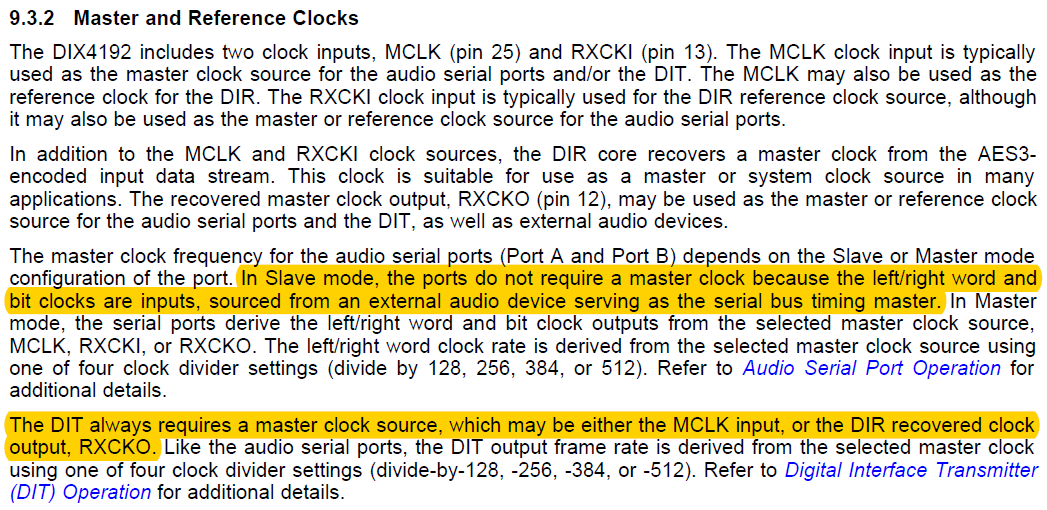Other Parts Discussed in Thread: DIX4192
Hi, I have a couple of quick questions:
1. Problem:
In an application the DIX4192 with input A (audio serial port A - SDINA) and output (DIT - AESOUT) used simultaneously. The input is used in slave mode.
The Datasheet says in slave mode the input ports do not need a master clock. But for the output it is stated that a master clock is required. That appears to be contradictory to me.
1. Question:
Is the master clock needed when input A in slave mode and AESOUT are used at the same time?
2. Problem:
In the same application the GPOs will be used to indicate activity via LEDs. In the datasheet it is not stated how much current the GPOs can provide though. Or does it provide the I_O = 4 mA stated under Test Conditions for I_IL (Low-level input current)? This wouldn't make sense to me though since this is an input parameter.
2.1. Question:
Is it possible to drive a low current (2 mA) LED with the GPOs or is a LED Driver required?
2.2. Question:
Also why is the DIT interrupt flag active low and the DIR non-audio data flag active high? This seems contradictory to me as well, since 2 different LED set-ups are needed to use them both in the same way.
Thank you very much for your support,
Franz





